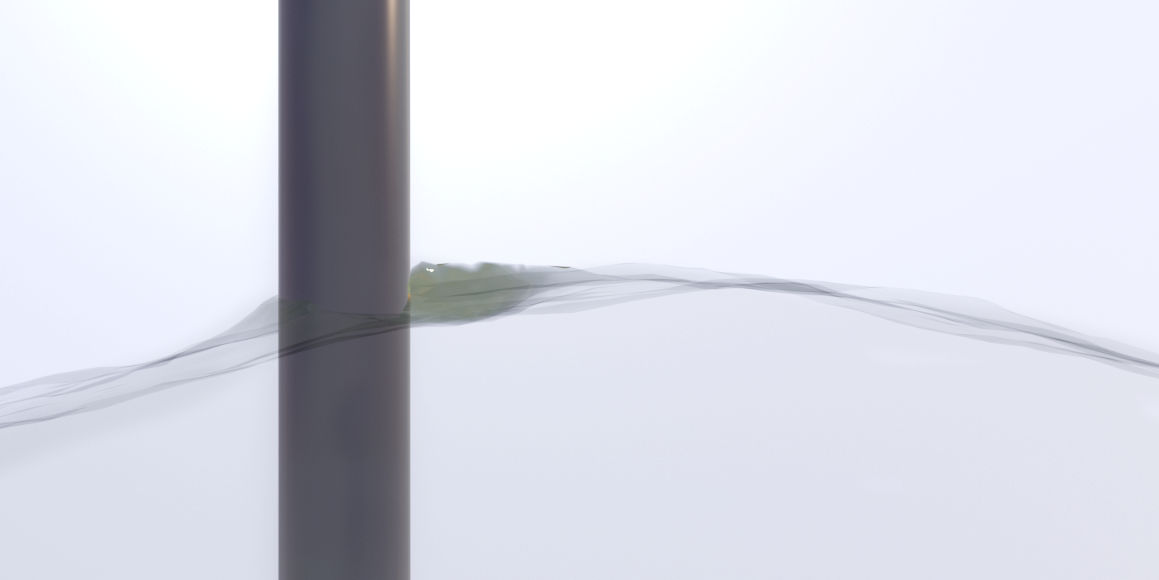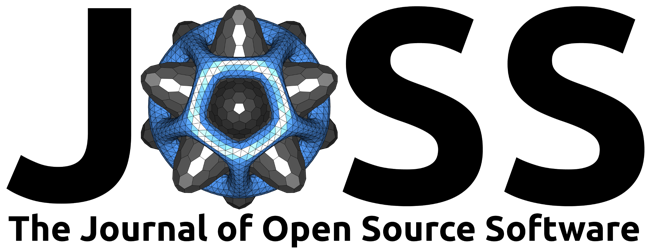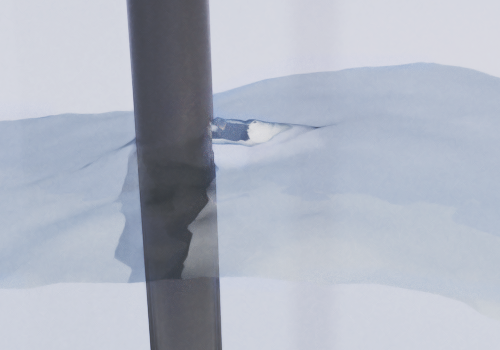Ocellaris news¶
First paper on Ocellaris has been published¶
The first paper 1 on Ocellaris has between accepted for publication in Computers & Fluids. The paper describes the slope limiter used to stabilise the velocity field with regards to the instabilities that occur near the jump in density between the two phases. The paper describes the limiter and shows the applicability of the method to simulate air/water flows in 2D.
The paper is available online at DOI 10.1016/j.compfluid.2019.104322, though it may take some days before the pre-print version is replaced with the final version.
The slope-limiting procedure for the velocities (figure from the paper). The gray boxes indicate divergence-free fields, while the green indicate stable (slope limited) fields.¶
Citations
- 1
Tormod Landet, Kent-Andre Mardal, and Mikael Mortensen. Slope limiting the velocity field in a discontinuous Galerkin divergence-free two-phase flow solver. Computers and Fluids, 2019. doi:10.1016/j.compfluid.2019.104322.
New release, Ocellaris version 2019.1.0¶
Ocellaris has been updated to support FEniCS version 2019.1.0. A new version of Ocellaris with the same version number has been released. There are no other changes except support for the latest version of PyYAML, 5.1, which is now required to run Ocellaris.
See Installing Ocellaris for information about installing and testing the new version.
Ocellaris in the Journal of Open Source Software¶
Ocellaris has been published in the Journal of Open Source Software, JOSS!
You can find the paper 1 on the JOSS web pages. The DOI is 10.21105/joss.01239.
A new release of Ocellaris, version 2019.0.2, has been released as a consequence of the very helpful comments from the JOSS reviewers. The updates include a revamped lid-driven cavity flow demo, license clarification, and documentation updates. A big thank you to the reviewers!
Citations
- 1
Tormod Landet. Ocellaris: a DG FEM solver for free-surface flows. Journal of Open Source Software, 4(35):1239, 2019. doi:10.21105/joss.01239.
Updated documentation and web pages¶
The Ocellaris web pages can now be found on www.ocellaris.org and the documentation there is also improved and updated. The source code repository has been moved to the Ocellaris Project organization ob Bitbucket, which will hopefully make it easier to collaborate on the development of Ocellaris in the future.

Cylinder in waves; from Ocellaris via Paraview and Blender.¶
In other news, you can now find Ocellaris releases on Zenodo, under DOI 10.5281/zenodo.2558302. To install Ocellaris the recommended way is still to use the prepared releases on PyPI through pip.
Ocellaris has also been submitted to the Journal of Open Source Software, see this issue for progress. Two more scientific papers using Ocellaris are also soon available as preprints, one on exactly divergence free pressure correction schemes for DG FEM and one on the 3D wave simulations shown earlier as videos on this blog.
New Ocellaris release, version 2019.0.0¶
A new version of Ocellaris has been released! This is a big milestone for the project as all the essential features planed for Ocellaris are now implemented and working 🎉 🎉 🙌
Full 3D solver
MPI parallel
Two-phase flows
Exactly mass conserving
Higher order velocity approximation (quadratic polynomials in each cell)
Stable and sharp air/water density transitions (factor 1000 density jump)
The new release has been tested successfully on several free surface flow benchmarks on up to 64 CPUs on the UiO Abel HPC cluster and it gives very satisfactory results. A paper on these tests is on the way. And, as always, a set of shorter MMS tests such as Taylor-Green are run automatically on each change in the code, so the basic flow solver should be in good shape.
Ocellaris version 2019.0.0 is built on top of the latest FEniCS release as of January 2019, version 2018.1.0.r3.
Improved documentation¶
The biggest feature new feature is the improved documentation. All relevant input file parameters are now documented. A news feed/blog has been added to show release notes such as this and other relevant information such as examples of Ocellaris simulations.
Some of the more obscure parameters, which you do not want to use unless you are deep into the code of Ocellaris itself, are not included in the documentation on purpose. These parameters can still be found, either in the source code itself (of course) or in the complete list of input parameters that is used to warn the user about misspellings in the input file. If there is a parameter that you would like to see documented, or if something is unclear in the documentation of a parameter, then please file an issue on the bug tracker.
Testing the new release¶
The release is available on PyPi, but you will probably want to install it through either Docker or Singularity unless you allready have an up to date FEniCS installation. The Docker method should work on Linux, Mac OS X and Windows as long as Docker is installed.
More information about Docker and Singularity containers can be found in the installation section of the Ocellaris documentation. To start a Docker container for a quick test you can run:
docker run -it trlandet/fenics-dev:2018.1.0.r3
The containers do not include Ocellaris, but contains all dependencies. To install the 2019.0.0 version of Ocellaris inside the container you can run:
pip3 install ocellaris==2019.0.0 --user
Numerical wave tank¶
A short video showing the results from running a numerical wave tank in Ocellaris and measuring the inline force on a bottom mounted cylinder. The video has been uploaded to YouTube and is also embedded below.
The input files, results, and plotting scripts can be found on Zenodo. A paper describing the simulation is also available 1.
Citations
- 1
Tormod Landet and Mikael Mortensen. Ocellaris: a discontinuous Galerkin finite element solver for two-phase flows with high density differences. arXiv physics.flu-dyn, 2019. arXiv:1904.00273.
3D dam breaking video¶
A short video showing the results from running Ocellaris on the green water 3D dam breaking benchmark by Kleefsman et al. (2005) 1 has been uploaded to YouTube and is also embedded below.
The input files, results, and plotting scripts can be found on Zenodo. A paper describing the simulation is also available 2.
Citations
- 1
K. M. T. Kleefsman, G. Fekken, A. E. P. Veldman, B. Iwanowski, and B. Buchner. A Volume-of-Fluid based simulation method for wave impact problems. Journal of Computational Physics, 206(1):363–393, 2005. doi:10.1016/j.jcp.2004.12.007.
- 2
Tormod Landet and Mikael Mortensen. Ocellaris: a discontinuous Galerkin finite element solver for two-phase flows with high density differences. arXiv physics.flu-dyn, 2019. arXiv:1904.00273.
New Docker image with FEniCS 2018.1.0.r3¶
The Docker (and Singularity) container configurations have been updated with the latest 2018.1.0.r3 release of FEniCS. The CircleCI test system is now using this latest image and it is also available from Docker Hub


